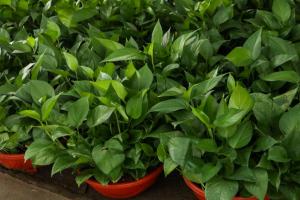Understanding how much gravel to use for potted plants
Gravel is a popular addition to potting mix for potted plants. It is known to provide adequate drainage, prevent soil compaction, and enhance overall soil quality. However, achieving the right balance of ingredients can be quite challenging, especially when adding gravel. In this article, we will explore how much gravel to use for potted plants and the benefits of using gravel in potting mix.
The benefits of using gravel in potting mix
Using gravel in potting mix provides numerous benefits for potted plants. Firstly, it improves soil drainage, which is essential for preventing waterlogging and root rot. Gravel also prevents soil compaction, which can restrict root growth and reduce nutrient uptake. Additionally, it adds weight to the pot, which can be beneficial for larger plants or those in windy environments. Finally, gravel can also help with aesthetical value by adding texture to the potting mix.
How much gravel to use for potted plants?
When it comes to how much gravel to use for potted plants, there is no one-size-fits-all answer. The amount of gravel you add to the mix depends on the size of the pot, the type of plant, and the desired drainage capacity. In general, a good rule of thumb is to add a layer of gravel that is about one-third of the pot's depth. So, for a 12-inch pot, you might add around four inches of gravel to the bottom. However, for smaller pots or plants that do not require a lot of drainage, you can reduce the amount of gravel to about one-inch deep. Conversely, for bigger pots or plants that need a lot of drainage, you can increase the thickness of the gravel layer.
Tips for adding gravel to potting mix
If you have decided to add gravel to your potting mix, here are some tips to ensure that you get the most benefits out of it:
Make sure you use clean, washed gravel to avoid introducing pests or diseases to the potting mix.
Ensure that the gravel layer is evenly spread and does not create any air pockets or blockages.
Do not mix the gravel with the soil; instead, layer it at the bottom of the pot.
Consider using a barrier like a piece of landscape cloth to prevent soil from seeping into the gravel layer.
Conclusion
Adding gravel to potting mix is a great way to improve drainage, prevent soil compaction and enhance soil quality for potted plants. However, the amount of gravel you add depends on several factors, including pot size, plant type, and desired drainage capacity. As a general rule, aim to add a layer of gravel that is about one-third of the pot's depth, and use clean and washed gravel to avoid introducing pests or diseases. With these tips in mind, you can create the ideal potting mix for your potted plants!

 how many times do yo...
how many times do yo... how many planted tre...
how many planted tre... how many pine trees ...
how many pine trees ... how many pecan trees...
how many pecan trees... how many plants comp...
how many plants comp... how many plants can ...
how many plants can ... how many plants and ...
how many plants and ... how many pepper plan...
how many pepper plan...































